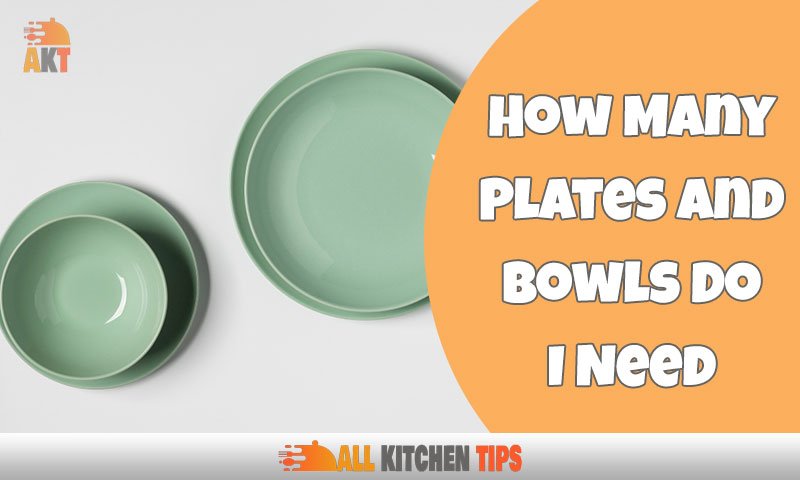Palm leaf plates are 100% eco-friendly and sustainable. Palm leaf plates are an eco-friendly alternative to traditional disposable plates made from plastic or paper.
These plates are made from fallen dried leaves of the Areca palm tree, which are then molded into different shapes and sizes to make plates. Unlike plastic or paper plates that require energy to produce and dispose of, palm leaf plates are natural and easily biodegradable.
They are also free from any harmful chemicals and do not contribute to environmental pollution. Additionally, using palm leaf plates helps support the local communities in rural areas that rely on this industry for their livelihood. Overall, palm leaf plates are an excellent choice for eco-conscious consumers who want to reduce their environmental impact without compromising on functionality or convenience.
Discover The Truth: Are Palm Leaf Plates Truly Eco-Friendly?

Are Palm Leaf Plates Eco-Friendly? Discover The Truth
If you are looking for eco-friendly alternatives for your event or daily use, you must have come across palm leaf plates. These plates are made from naturally fallen leaves and are one of the most popular choices for people who want to reduce their environmental footprint.
However, there are misconceptions about palm leaf plates that need to be debunked. In this blog post, we will explore the truth behind palm leaf plates’ eco-friendliness.
What Makes a Product Eco-Friendly?
Before we delve deeper into palm leaf plates’ eco-friendliness, we need to understand what makes a product eco-friendly. Here are some aspects to consider:
- Materials: A product made from sustainable, biodegradable, and natural materials is eco-friendly.
- Manufacturing process: The manufacturing process should consume minimal energy and reduce waste and emissions.
- End-of-life management: A product that can be easily recycled or composted is eco-friendly.
- Usability: A product that reduces environmental impact during its usage is eco-friendly.
Debunking Misconceptions About Palm Leaf Plates
Palm leaf plates have gained popularity for all the right reasons. However, some misconceptions have emerged that question their eco-friendliness. Here are some points to consider:
- Misconception #1: Palm leaf plates require cutting down trees.
Fact: Palm leaf plates are made from naturally fallen leaves from Areca palm trees. No trees are harmed during the production process.
- Misconception #2: Palm leaf plates are not biodegradable.
Fact: Palm leaf plates are 100% biodegradable and can be easily composted after use. These plates decompose naturally, leaving no harmful toxins.
- Misconception #3: Palm leaf plates are not durable.
Fact: Palm leaf plates are strong and sturdy and can withstand hot and cold temperatures. They are perfect for serving hot and cold food items.
- Misconception #4: Palm leaf plates are expensive.
Fact: Though palm leaf plates are slightly more expensive than other disposable plates, they are worth the investment. The plates’ sturdiness ensures that you need fewer plates, which ultimately saves money.
It is vital to understand that palm leaf plates are a sustainable and eco-friendly alternative to single-use plastic. These plates help reduce waste and minimize environmental impacts. Moreover, with their unique texture and rustic feel, palm leaf plates add to the charm of any event or gathering.
The Making Of Palm Leaf Plates
Are palm leaf plates eco-friendly? The making of palm leaf plates
When it comes to eco-friendly and sustainable options, palm leaf plates are gaining popularity as an attractive alternative to single-use plastic and disposable paper plates. Made from fallen palm leaves that are collected and cleaned without harming the trees, palm leaf plates are nature’s gift to us.
Let’s delve deeper into the process of making palm leaf plates, their use of chemicals and additives, and how they compare to other eco-friendly alternatives.
The Process Of Making Palm Leaf Plates

Palm leaf plates are made using a traditional process that involves the following steps:
- The fallen leaves are collected and cleaned without the use of any chemicals.
- The cleaned leaves are heat-pressed into various shapes and sizes using hydraulic presses.
- The plates are sterilized by exposing them to ultraviolet light or ozone and then packed for shipping.
This process ensures that palm leaf plates are free from harmful chemicals, making them a safe and healthy option for serving food.
Use Of Chemicals And Additives
Unlike some other disposable plate options, palm leaf plates do not involve the use of any chemicals or additives. No bleach, waxes, dyes, or toxic materials are used in the production of these plates. This makes them a great eco-friendly choice for those wanting to reduce their carbon footprint and reduce exposure to synthetic materials.
Comparison With Other Eco-Friendly Alternatives
When it comes to comparing palm leaf plates with other eco-friendly alternatives, the following points are worth noting:
- Bamboo plates: Although bamboo plates are highly durable and sustainable, the production process includes the use of steam and chemicals, which may be harmful.
- Paper plates: Although paper plates are biodegradable, they are not as sturdy as palm leaf plates and require more energy to produce.
- Stainless steel plates: Stainless steel plates are a great sustainable choice but require energy to clean and maintain over time.
Palm leaf plates are a great eco-friendly alternative because they are natural, sturdy, and have no negative impact on the environment.
Palm leaf plates are an excellent eco-friendly alternative for those looking to choose sustainable options. The production process does not involve the use of any harmful chemicals or additives, making palm leaf plates a safe and healthy choice. Compared to other eco-friendly options such as bamboo plates, paper plates, and stainless steel plates, palm leaf plates are a superior choice due to their durability, natural composition, and minimal environmental impact.
Environmental Impact Of Palm Leaf Plates
Are Palm Leaf Plates Eco Friendly
Palm leaf plates are a popular alternative to conventional disposable tableware that is typically made from paper, plastic, or styrofoam. In this blog post, we will delve into the environmental impact of palm leaf plates and explore the reasons why they are considered eco-friendly.
Disposal And Decomposition
- Palm leaf plates are usually biodegradable and compostable, which means they can be disposed of in a compost bin or municipal composting facility.
- They are made from natural materials that come from sustainably harvested palm leaves, making them non-toxic and chemical-free.
- When palm leaf plates are composted, they break down into organic matter and return to the soil, enriching it with nutrients and promoting healthy plant growth.
Carbon Footprint
- Palm leaf plates have a low carbon footprint because they are made from renewable resources and require minimal energy to produce.
- Unlike plastic or paper, they do not release harmful greenhouse gases or contribute to pollution.
- By choosing palm leaf plates over other disposable tableware options, you are helping to reduce your carbon footprint and mitigate the effects of climate change.
Comparison With Other Disposable Tableware Options
- When compared to plastic, paper, or styrofoam plates, palm leaf plates are a more sustainable choice.
- Plastic takes hundreds of years to decompose, while styrofoam never fully breaks down and is harmful to the environment and wildlife.
- Paper, on the other hand, requires a significant amount of energy and water to manufacture and contributes to deforestation.
- Palm leaf plates, however, are made from waste materials and require no additional resources to produce, making them an eco-friendly and viable alternative.
Palm leaf plates are an excellent choice for those looking for a more sustainable and eco-friendly option for their disposable tableware needs. They offer a low carbon footprint, are made from natural and renewable resources, and can be disposed of in a compost bin or municipal composting facility.
So, if you want to do your part in reducing your impact on the environment, consider using palm leaf plates for your next event or gathering.
Social Impact Of Palm Leaf Plates
As the world’s attention turns to climate change and the negative impact of single-use plastics, more and more people are seeking alternatives to traditional disposable tableware. In this quest for sustainable alternatives, palm leaf plates have emerged as one of the most eco-friendly options available.
But, beyond their environmental benefits, palm leaf plates also have a positive social impact on the communities that produce them. Here are some of the ways that the production and use of palm leaf plates benefit local communities:
Fair Trade And Ethical Sourcing
- Most palm leaf plates are produced in India and other parts of southeast Asia, where they provide a vital source of income for local communities.
- Many of these communities are economically vulnerable, and the production of palm leaf plates offers a way to earn an income without having to rely on environmentally destructive practices like clear-cutting forests.
- The best producers of palm leaf plates work directly with local artisans, ensuring that workers are paid a fair wage for their labor and that all materials are sourced ethically and sustainably.
- By choosing to purchase palm leaf plates from fair trade sources, consumers can feel confident that their purchases are directly supporting the livelihoods of skilled artisans and craftspeople.
Supporting Local Communities
- Palm leaf plates offer additional environmental benefits beyond their immediate use. Because they are made from all-natural materials, they can be safely composted, providing a source of rich fertilizer for local farms and gardens.
- By using locally sourced materials, the production of palm leaf plates helps to support local economies and communities. Unlike disposable tableware made from plastics, palm leaf plates do not come from faraway factories or require complex supply chains to produce.
- By supporting the use and production of palm leaf plates, consumers can help to create more resilient, sustainable local economies in regions where sustainable livelihoods are essential for survival.
Overall, palm leaf plates offer a unique combination of eco-friendliness and social impact that makes them an ideal choice for anyone looking to reduce their carbon footprint and make a positive difference in the world.
FAQs
Are Palm Leaf Plates Compostable?
Yes, palm leaf plates are 100% compostable and biodegradable. They degrade naturally without harming the environment.
Are Palm Leaf Plates Safe For Food?
Yes, palm leaf plates do not contain any harmful chemicals or toxins. They are safe for serving food.
Can Palm Leaf Plates Be Reused?
No, palm leaf plates are designed for single use only. They are not suitable for reuse as they may break or deteriorate.
How Long Do Palm Leaf Plates Last?
Palm leaf plates can last for several years if kept in a dry place away from sunlight. However, they are not meant for long-term use as they are biodegradable.
Conclusion
Palm-leaf plates are an excellent alternative to disposable plastic or paper plates. They are an eco-friendly option that minimizes environmental pollution, reduces carbon emissions, and supports local businesses. The manufacturing process uses only fallen leaves and requires minimal water and energy.
The plates are also biodegradable and can be composted after use, reducing the amount of waste in landfills. Moreover, palm leaf plates are durable and can be used for a range of events and occasions. The natural texture and pattern of the plates make them visually appealing and add an earthy charm to any setting.
Overall, switching to palm leaf plates is a simple but significant step towards a greener and healthier planet. By embracing eco-friendly alternatives like palm leaf plates, we can help create a more sustainable and harmonious future for ourselves and the generations to come.




